Table of Contents
The Mt. Hood National Forest is a beautiful and popular destination for hikers and outdoor enthusiasts. Located in the Cascade Range just outside of Portland, Oregon, the area offers many recreational opportunities such as hiking, backpacking, skiing, kayaking and more.
There are numerous hiking trails within the Mt. Hood National Forest, ranging from easy, family-friendly hikes to challenging, backcountry routes. In this post we’ll be talking about 8 of our favorite hikes we have done around Mt. Hood.
As always, it is important to be prepared and to follow Leave No Trace principles to protect the natural environment. Be sure to bring plenty of water, snacks, and properly clothing, as the weather can change quickly in the mountains. Lastly, it’s also a good idea to let someone know where you are going and when you plan to return, and to carry a map and a compass or a GPS device.
1. Cooper Spur

- Length: 6.8 miles (out-and-back)
- Elevation Gain: 2,995 feet
- Difficulty Level: Moderate-Difficult
Starting off with our favorite hike on Mt. Hood is Cooper Spur. Cooper Spur is a challenging and strenuous hike that takes you up to Eliot Glacier and is the highest point on Mt. Hood accessible by trail.
From the Cooper Spur Mountain Resort, drive on the Cloud Cap Road all the way to the trailhead at the Cloud Cap Saddle campground. Please note that this road can be a bit challenging to drive on to due to rough, rocky road conditions and pot holes, and is closed during the winter months.
The hike starts off in the forest and quickly begins to ascend, with constant incline throughout the whole hike. Once you pass the tree line, you’ll be rewarded with panoramic views of Mt. Hood and the surrounding mountains. You can also see the Eliot Glacier, which is located on the northeastern side of the mountain. This portion of the hike is fully exposed so make sure to bring plenty of water and sun protection.
2. Tilly Jane A-Frame
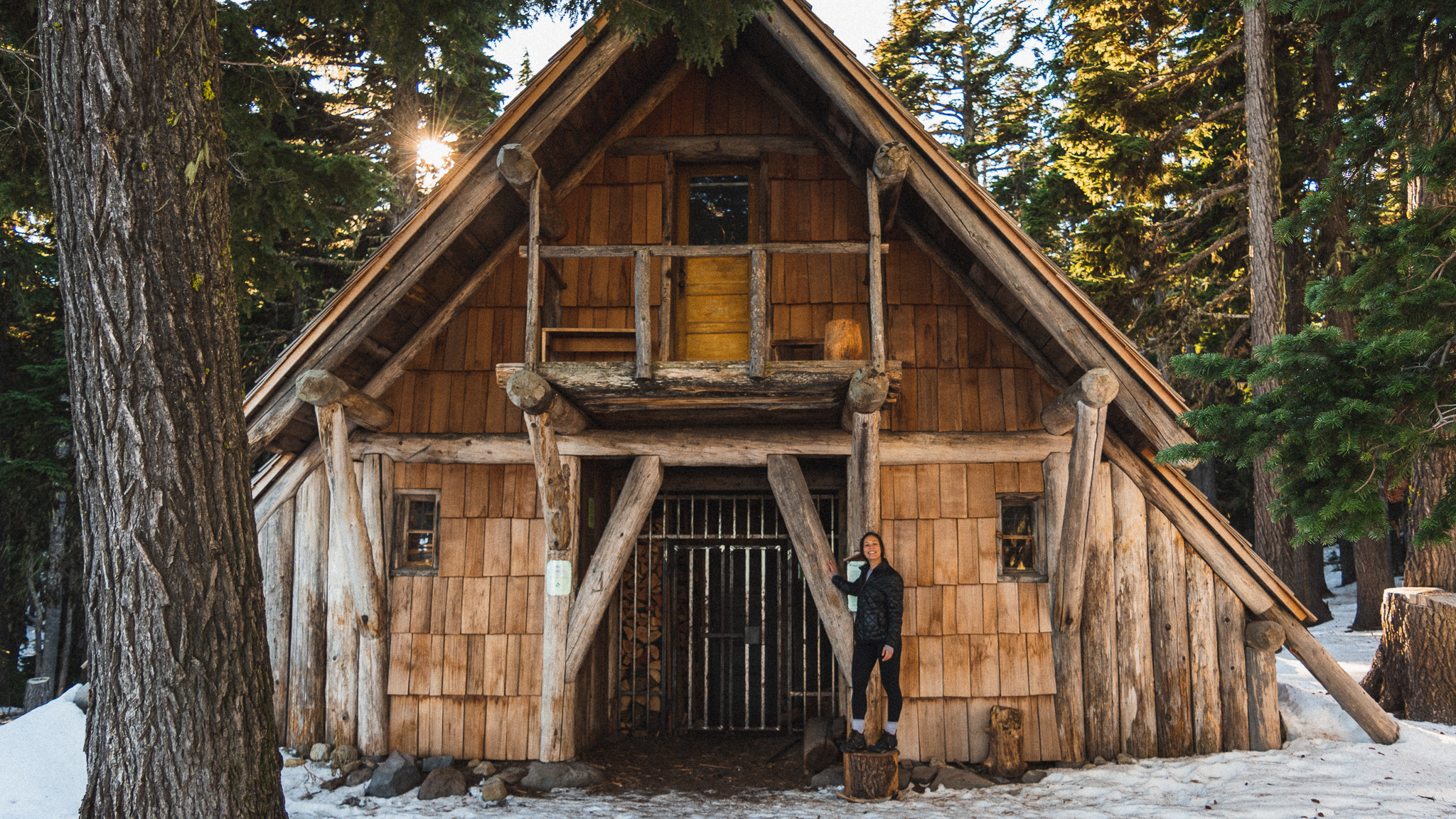
- Length: 5.3 miles (out-and-back)
- Elevation Gain: 1,922 ft
- Difficulty Level: Moderate-Difficult
Close to Cooper Spur is the Tilly Jane Trail. This particular out-and-back route starts from the Tilly Jane Sno Park and goes to the Tilly Jane A-Frame. This trail can be hiked year round and is a popular spot for cross-country skiing and snowshoeing in the winter months. The beautiful wood cabin was originally used as a ranger station, but is now available for rent as a backcountry shelter.
The hike starts in a lush, green forest with a steady uphill climb. As you ascend, you’ll pass through a zone of dead trees with breathtaking views of Mt. Hood. Keep going to reach the Tilly Jane A-frame and be rewarded with panoramic views of the Cascade Range. Take a break at the A-frame for a snack before heading back down.
3. Timothy Lake

- Length: 11.2 miles (loop)
- Elevation Gain: 515 feet
- Difficulty Level: Moderate-Difficult (due to length)
Located south of Mt. Hood, Timothy Lake is a favorite spot for both day trips and overnight camping. The lake offers several campgrounds for visitors to choose from. The Timothy Lake Shoreline Loop is a clearly marked hiking trail that circles the lake, offering picturesque views of Mt. Hood. Hike the trail in either direction for a scenic experience.
4. Elk Meadow
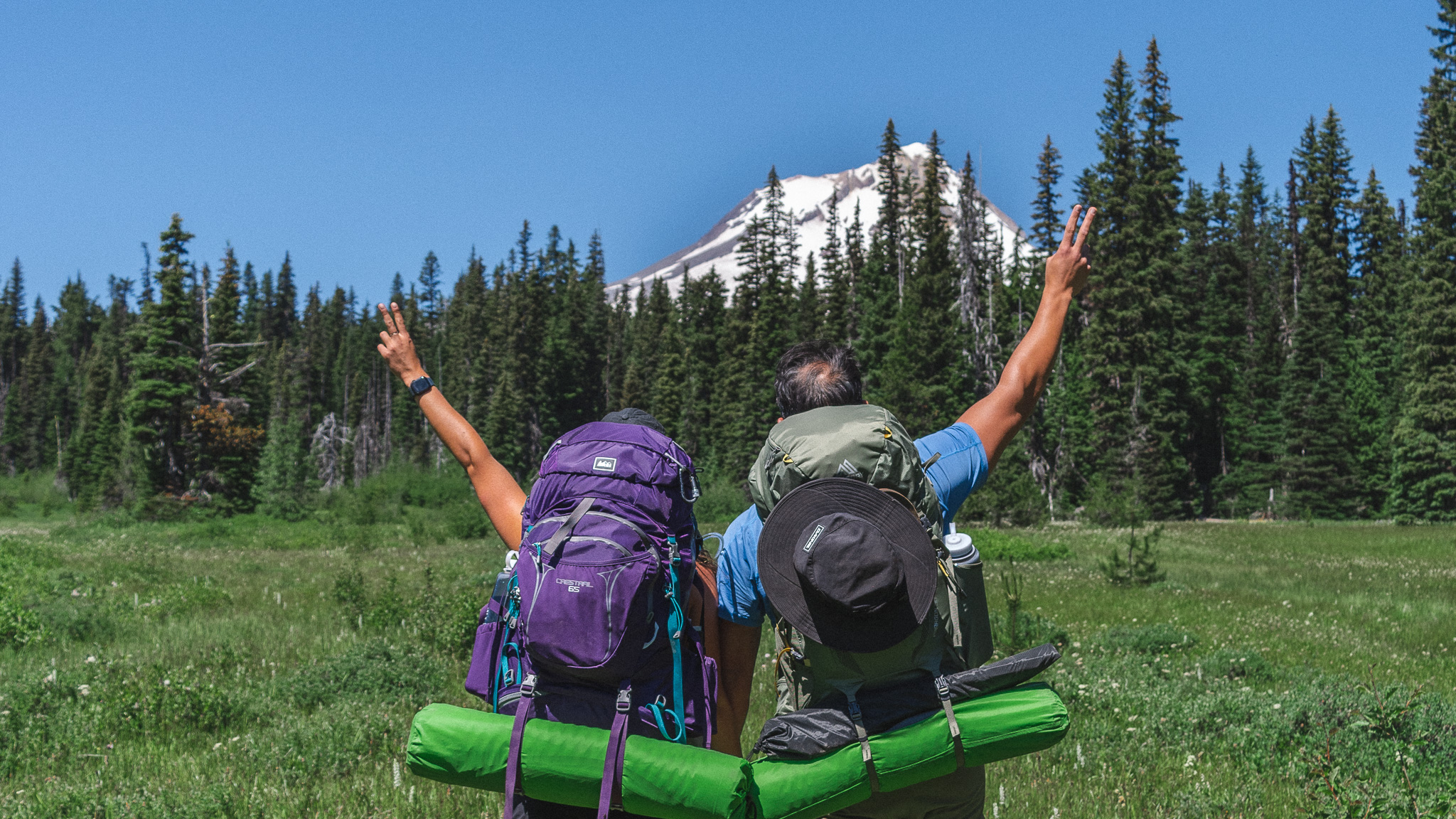
- Length: 6.4 miles (loop)
- Elevation Gain: 1,102 feet
- Difficulty Level: Moderate
The Elk Meadow trail, located on the eastern side of Mt. Hood, is a well known destination for hikers. The trailhead at Elk Meadows leads through a forest, a river crossing and ends at a scenic loop around a meadow with views of Mt. Hood. There are several campgrounds outside the meadow (camping inside the meadow is prohibited) and is a great option for first-time backpackers.
5. Lower Twin Lake
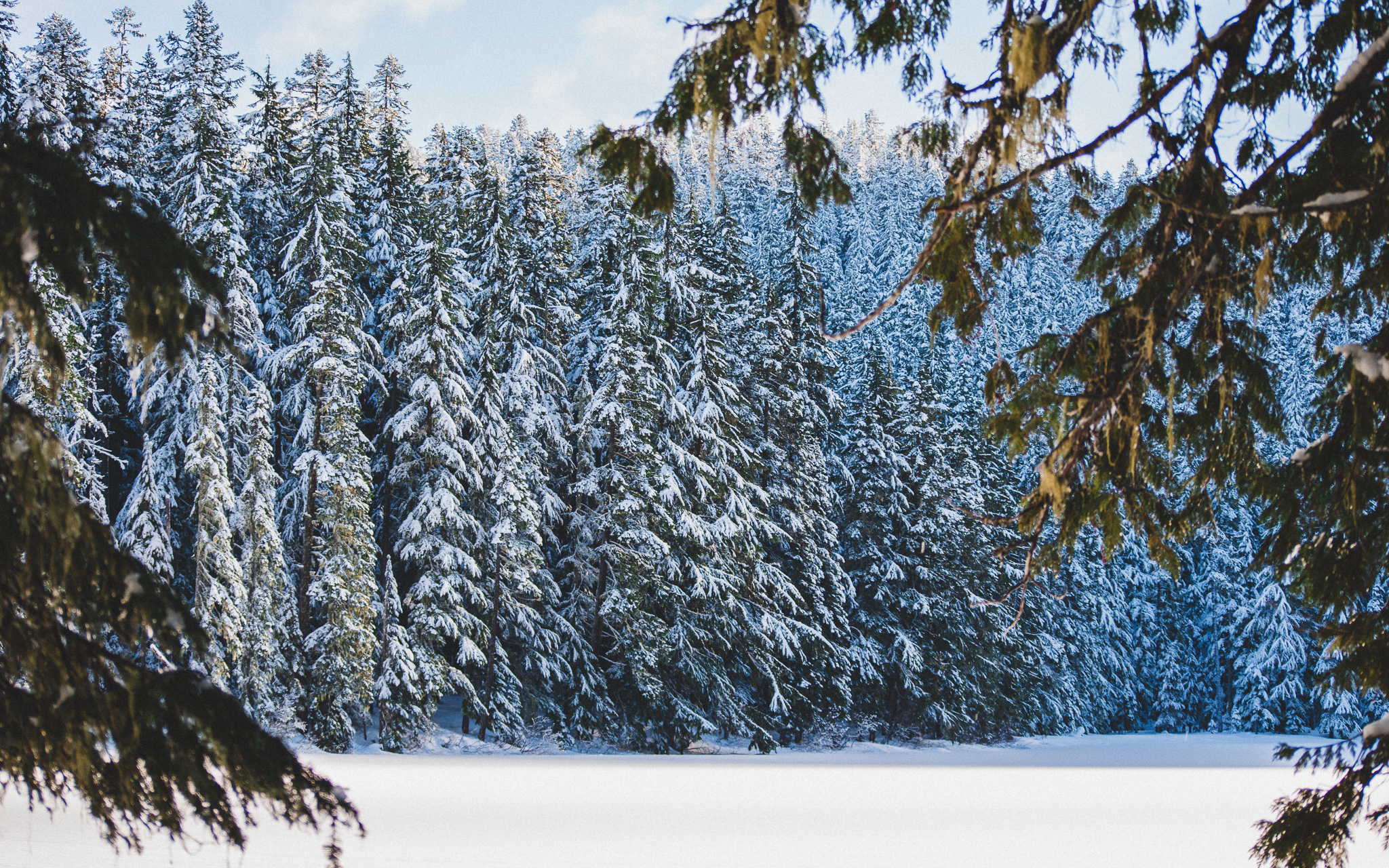
- Length: 4.4 miles (out-and-back)
- Elevation Gain: 652 ft
- Difficulty Level: Moderate
South of Mt. Hood lies the moderate hike from Frog Lake Sno Park to Lower Twin Lake. Those seeking a longer hike can continue on to Upper Twin Lake and explore the various loop options. During the winter, you can enjoy snowshoeing on this trail which is well-groomed and maintained throughout the winter season. The campsites at Lower and Upper Twin Lakes make it a great spot for beginner backpackers.
6. Mirror Lake

- Length: 4.2 (loop)
- Elevation Gain: 642 feet
- Difficulty Level: Easy
Mirror Lake is a stunning small lake located west of Ski Bowl, attracting both day hikers and overnight backpackers with its breathtaking views of Mount Hood. The trailhead shares a parking lot with Ski West, and I highly recommend getting there early to avoid the crowds. This hike is perfect for families looking for an easy trail.
7. McNeil Point
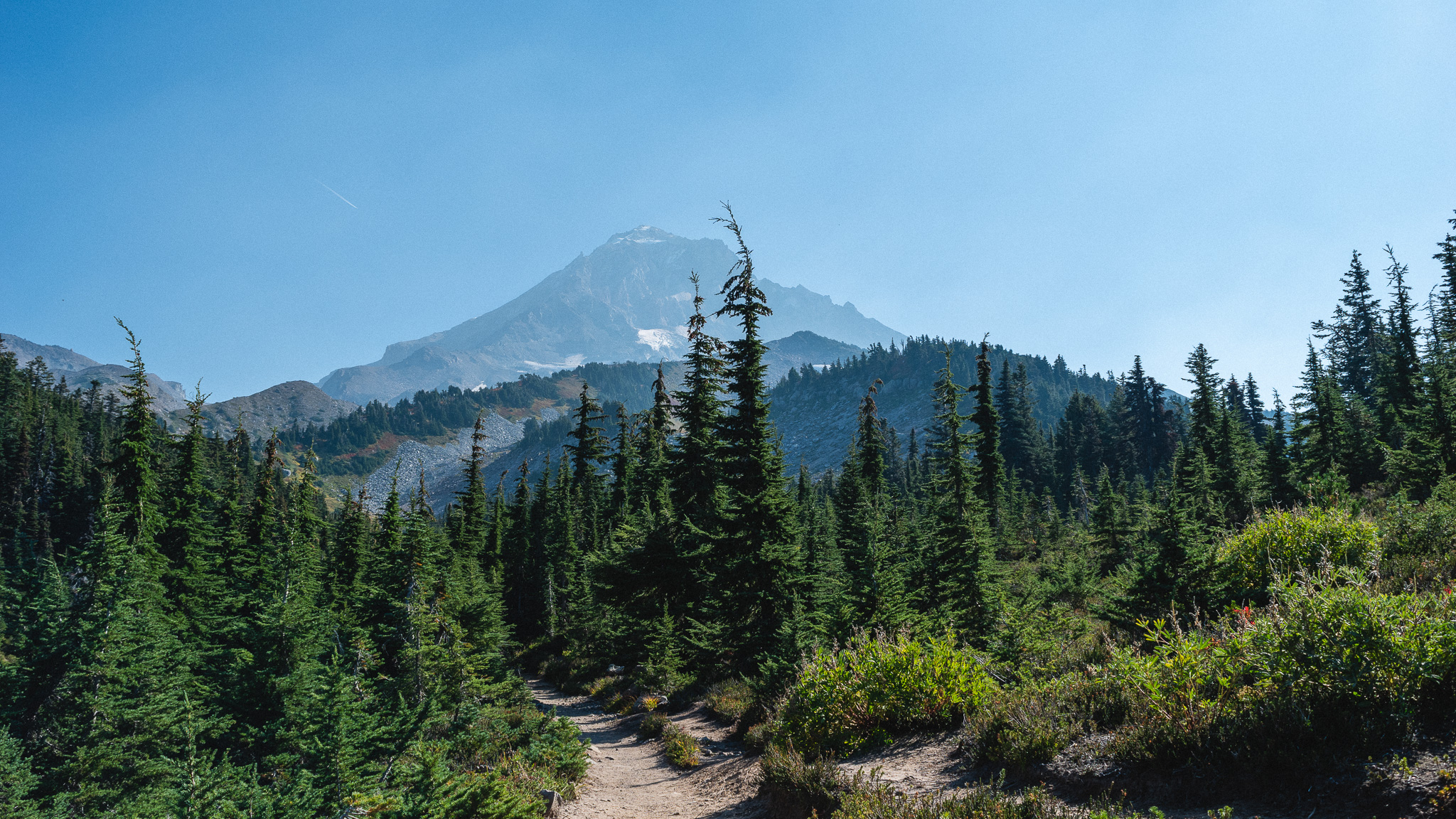
- Length: 10 miles (out-and-back)
- Elevation Gain: 2,726 ft
- Difficulty Level: Difficult
The McNeil Point hike, starting from the Top Spur trailhead on Mt. Hood, is a strenuous but rewarding journey that provides spectacular views of Mt. Hood. The trailhead is located on the northwest side of the mountain, and the hike starts with a steep climb through a thick forest. As you progress, the trail may include some scrambling on loose rocks, depending on the chosen route.
The McNeil Point shelter is a great spot to rest and take in the views. From there, you can choose to continue to climb steep trail to Ho Rock for even more great views.
8. Trillium Lake
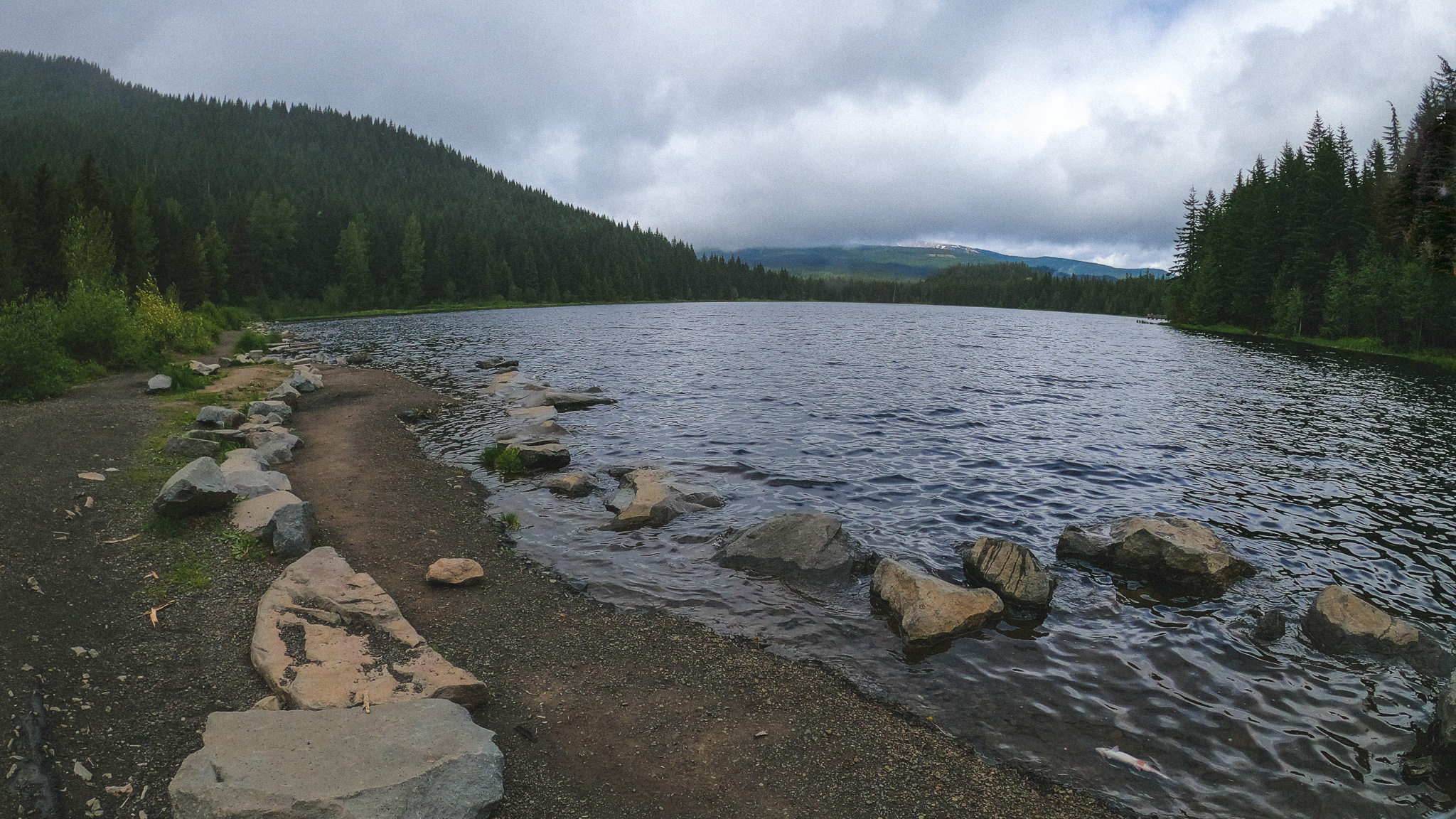
- Length: 1.9 (loop)
- Elevation Gain: 26 feet
- Difficulty Level: Easy
One of the most popular destinations on Mt. Hood is Trillium Lake due to its beauty and accessibility year-round. The lake offers a stunning view of the mountain, and the trail that loops around the lake is short, family-friendly and less than 2 miles. To enjoy a more peaceful experience, visiting early in the morning or during the weekdays is best to avoid the crowds during peak hours and especially in the summer.

Whether you are coming to Oregon to visit or you live here and want to explore more of Mt. Hood, we hope this list was helpful! Of course this list does not cover all of the beautiful hikes in the Mt. Hood National Forest, it’s a great start and we have loved every single one of them.
As always, practice Leave No Trace principles and make sure to bring the proper gear and equipment depending on the season and forecast. If you are new to hiking, check out our previous blog post 5 Hiking Tips for Beginners.
Happy hiking!
